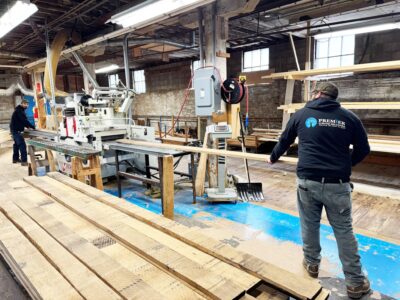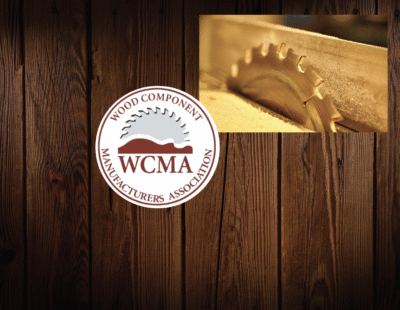As Quebec continued to struggle with rising numbers of COVID-19 cases in late fall, the Premier of the province announced late in September the greater Montreal and Quebec City areas, would enter the red alert level on October 1st. This meant that bars, restaurant dining areas, cinemas and other venues in those regions would be closed. The lockdown didn’t apply to the retail sector or other businesses, so as to ensure people could still make a living. Gatherings in private residences in those red zones were no longer permitted. The province hinted at the possibility of additional restrictions for these areas, but suggested there would not be a return to the widespread lockdowns imposed earlier this year.
Contacts noted that slim to non-existent margins with low log supplies prevented sawmills from increasing production. Some logging companies have switched to softwoods. With the wet weather conditions, the hunting season and the holiday period fast approaching, it is harder to increase log inventories, so sawmill production is declining. Demand for new homes and renovation markets are on the rise and are stimulating demand for Hardwoods. Some contacts are feeling the challenges of getting enough lumber and finding employees. People are still very concerned about the effects of the coronavirus, the outcome of the U.S. election, and export markets.
Cherry lumber sales to export markets, and to China in particular have eased. However, some contacts noted that domestic sales have improved to established clients who have also seen their business improve. Prices are reported to have stabilized.
The regionally important species, Hard Maple, is seeing good demand on domestic markets, according to manufacturers. Hard Maple is cited as one of the bestselling species. Some cabinet manufacturers are looking to fill their requirements for Hard Maple and Red Oak. Prices are on the rise for this species.
Since the arrival of COVID-19, demand for Soft Maple had cooled slightly, but it is now making a comeback, driven by sawmill production and demand for home fittings and furnishings. The demand is improved for No. 1 Common and Better grades. Secondary manufacturers and wholesalers are trying to replenish Soft Maple inventories, but it is a challenge.
With the Emerald Ash Borer having decimated a great deal of Ash trees across the country and into the U.S. and to the demand from export markets, there is not a lot of Ash logs available in some areas contacted. Inventories are dwindling, and green and kiln-dried production is not enough to meet domestic and export demand. Prices are being pushed up.
For flooring manufacturers and some truck trailer flooring producers, lumber inventories are low, and some contacts stated they have to search further to purchase lumber for Oak. Sawmills are having difficulty increasing their output due to log supply constraints.
As for Red Oak, there seems to be an improvement in the sales of this species due to domestic demand, and to U.S. demand from residential flooring manufacturers Exports to China are ongoing, with improved markets to Vietnam.
White Oak is in demand from export markets, while Nos. 2A and 3A are moving to flooring manufacturers. Prices for green White Oak lumber are reported as advancing. Demand for kiln-dried FAS White Oak is strong, with 4/4 No. 1 Common selling quickly, and other Common grade items also being more easy to sell.
Business for Walnut is good, comment producers and wholesalers. There is a push to dry this species to provide for an adequate supply over the winter months. Forcertain areas, there is not sufficient supply to meet demand for this species.
Statistics Canada (StatsCan) reported September (at presstime the most recent data available) inflation was up 0.5 percent compared with a year ago. Economists on average had expected a year-over-year increase of 0.4 percent, according to financial data firm Refinitiv. StatsCan says that prices were up in six of the eight major components of the consumer price index, including increases in tuition fees as students headed back to school.
The price index for food was up 1.6 percent in September, a slight slowing from the 1.8 percent bump recorded in August, passenger vehicle prices were up 2.7 percent, and housing was up 2.6 percent.
Statistics Canada said the consumer price index would have increased by 1 percent in September had a 10.7 percent year-over-year drop in the price of gasoline not been factored in.
The Bank of Canada intends to keep its key policy interest rate at 0.25 percent until inflation is back at the central bank’s two-percent target. The bank hopes that by keeping its rate low, it can drive down rates on mortgages and loans to make it easier for people to borrow and spend to help the economy recuperate from the COVID-19 crisis. It was expected at the time of writing that the Bank of Canada would make its rate announcement the following week, and release an updated economic outlook.
On the housing front, according to published information, housing starts across Canada plunged 20 percent month-over-month in September, in line with a nationwide drop in construction employment six months into the COVID- 19 pandemic.
As of the end of September, the seasonally adjusted annual rate of housing starts nationwide stood at 208,980 units—down from 261,547 level in August—according to Canada Mortgage and Housing Corp. The six-month moving average of the monthly seasonally adjusted annual rates of housing inched up to 214,647 units from 212,609 in August.
Urban starts declined by 21.1 percent to 195,909. This was largely due to social distancing measures leading to much slower construction of apartments, condos, and other multiple-unit housing, with starts falling by 27 percent to 146,005. Single-detached urban starts had a modest 3.4 percent rise to 49,904 units.
Home renovation spending is back on track in Canada, according to Altus Group. And more homeowners are looking outside for inspiration. Renovation spending in both May and June 2020 showed that more homeowners were moving ahead with projects that had been planned and shelved as the coronavirus threat appeared, according to Altus Group’s chief economist. But he noted it was not likely that total renovation expenditures in 2020 would match the $80.1 billion spent in 2019.
Kitchens and bathrooms remain the renovation target, but there has been a move to creating home offices (as more people are forced to work from home), finishing basements, and increasingly adding outdoor pools and decks and improving landscaping. The change is reflected in a 13 percent June 2020 increase in sales at building and garden supply stores, according to Statistics Canada, compared to a month earlier.
With a stronger housing U.S. sector continuing to rise at the time of this writing, and the continued activity in Canada, it is hoped that these conditions will improve business profit margins for all in the Hardwood sector.
During the Holiday Season, we wish everyone safe and Happy Holidays.
The premier online information source for the forest products industry since 1927.
- Miller Wood Trade Publications
- Miller Wood Trade Publications
- Miller Wood Trade Publications
- Miller Wood Trade Publications
- Miller Wood Trade Publications
- Miller Wood Trade Publications
- Miller Wood Trade Publications
- Miller Wood Trade Publications
- Miller Wood Trade Publications
- Miller Wood Trade Publications
- Miller Wood Trade Publications
- Miller Wood Trade Publications
- Miller Wood Trade Publications
- Miller Wood Trade Publications
- Miller Wood Trade Publications
- Miller Wood Trade Publications
- Miller Wood Trade Publications
- Miller Wood Trade Publications
- Miller Wood Trade Publications
- Miller Wood Trade Publications
- Miller Wood Trade Publications







